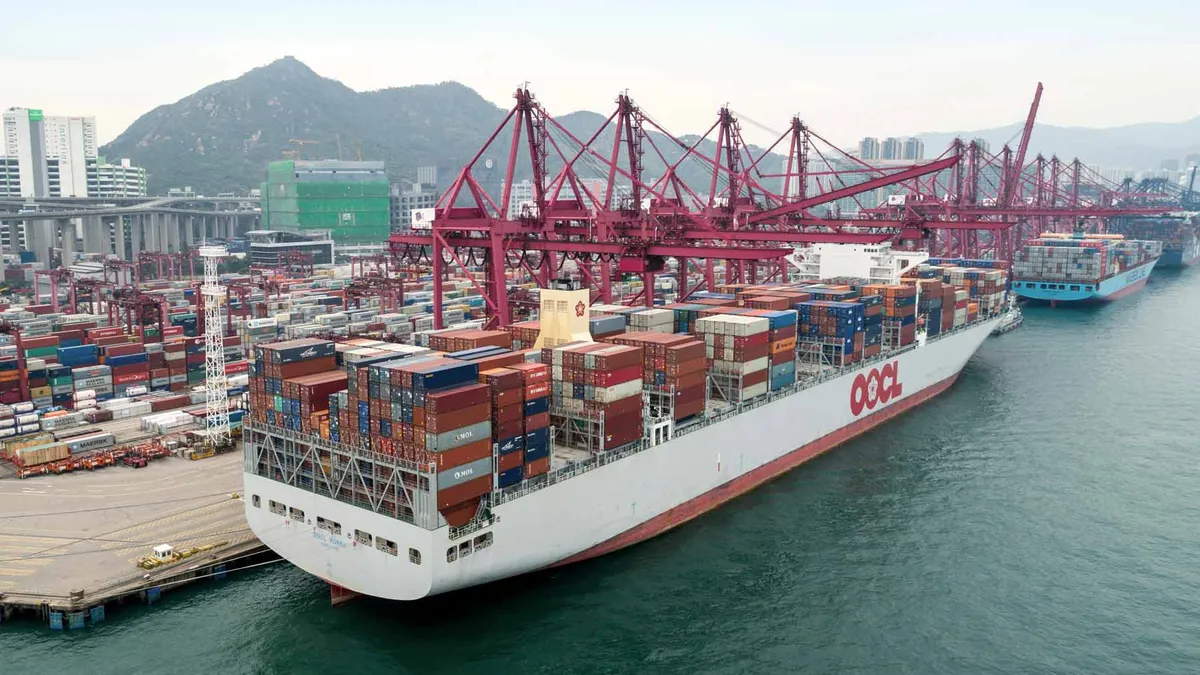Dive Brief:
- Capacity on the Transpacific lane is up 20% YoY, as carriers have injected resources into the trade lane resulting in "unprecedented capacity increases in Q4," according to a release from Sea-Intelligence.
- Capacity levels on the Transpacific have been a roller coaster ride throughout 2020 — plunging as carriers blanked sailings in the early days of the pandemic, only to be met with unexpected demand that resulted in shipping companies bringing resources back online. The capacity cuts earlier in the year brought deployment levels lower than any seen since 2015, according to Sea-Intelligence.
- "In some weeks, we are seeing capacity grow by as much as 30% compared to last year at the same time," Sea-Intelligence CEO Alan Murphy said in the release.
Dive Insight:
Container shipping demand has surged in the back half of 2020 as companies catch up on restocking and consumer spending rose through the summer.
Shippers have thus had to suffer the dual blow of tight capacity and high spot rates. Carriers have deployed a record amount of capacity, but it has still not been enough to keep up with demand. Shippers have described procuring freight as a "nightmare." Demand has driven costs up not only on the spot market, but also for equipment like containers and chassis.
"The pace and magnitude of the trade recovery have generally exceeded our customers’ expectations, and virtually all of the major shipping lines have needed to add significant container capacity," Brian Sondey, CEO of Triton International, the world's largest container leasing company, said in a statement in a recent earnings release.
Freight continues to flow into U.S. gateways. The Signal, which provides a three-week volume outlook for The Port of Los Angeles, shows that volume is expected to be up nearly 48% YoY this week. A drop is expected in the first week in November, but double-digit YoY increases are expected again by the second week of next month.
"Market conditions are expected to remain strong at least through early next year, and we expect our operating and financial performance to improve further," Sondey said on the company's earnings call on Friday. "Our key operating metrics are still increasing."
Carriers have done well financially as a result of this market. OOCL, which released earnings Friday, saw its average revenue per TEU increase by more than 6% compared to the same quarter last year.
But just how long these volume records will last is unclear. Movements in the macroeconomy suggest consumer spending might not be able to keep volume afloat much longer, Lars Jensen, the head of consulting at Sea-Intelligence, said on LinkedIn. Jensen cited a forecast from The Conference Board, a non-government nonprofit, showing that high unemployment will undercut the consumer spending that helped to spur growth through the summer.
"Consumer confidence declined slightly in October, following a sharp improvement in September," Lynn Franco, the senior director of economic indicators at The Conference Board, said in a statement Tuesday. "There is little to suggest that consumers foresee the economy gaining momentum in the final months of 2020, especially with COVID-19 cases on the rise and unemployment still high."















